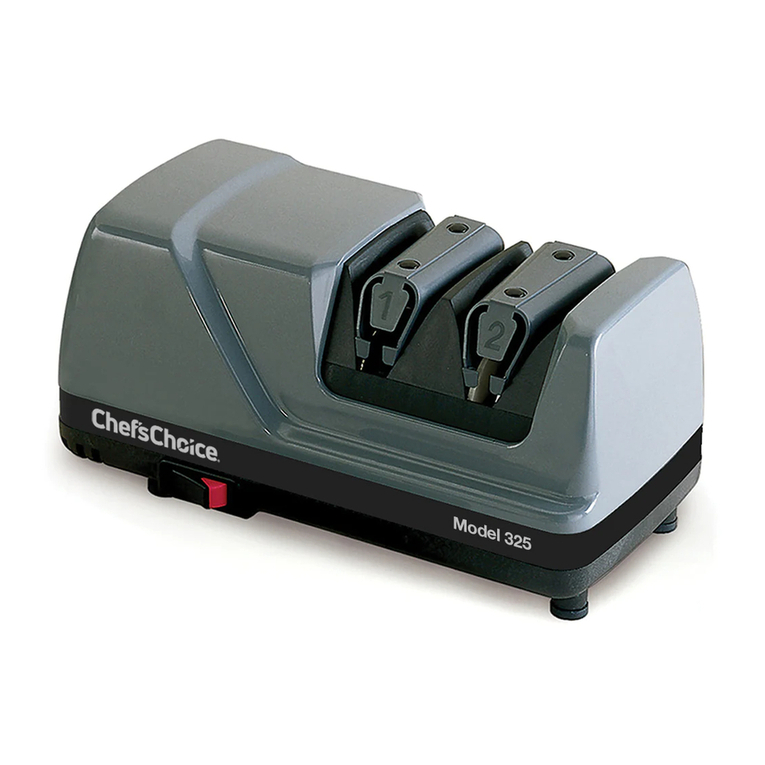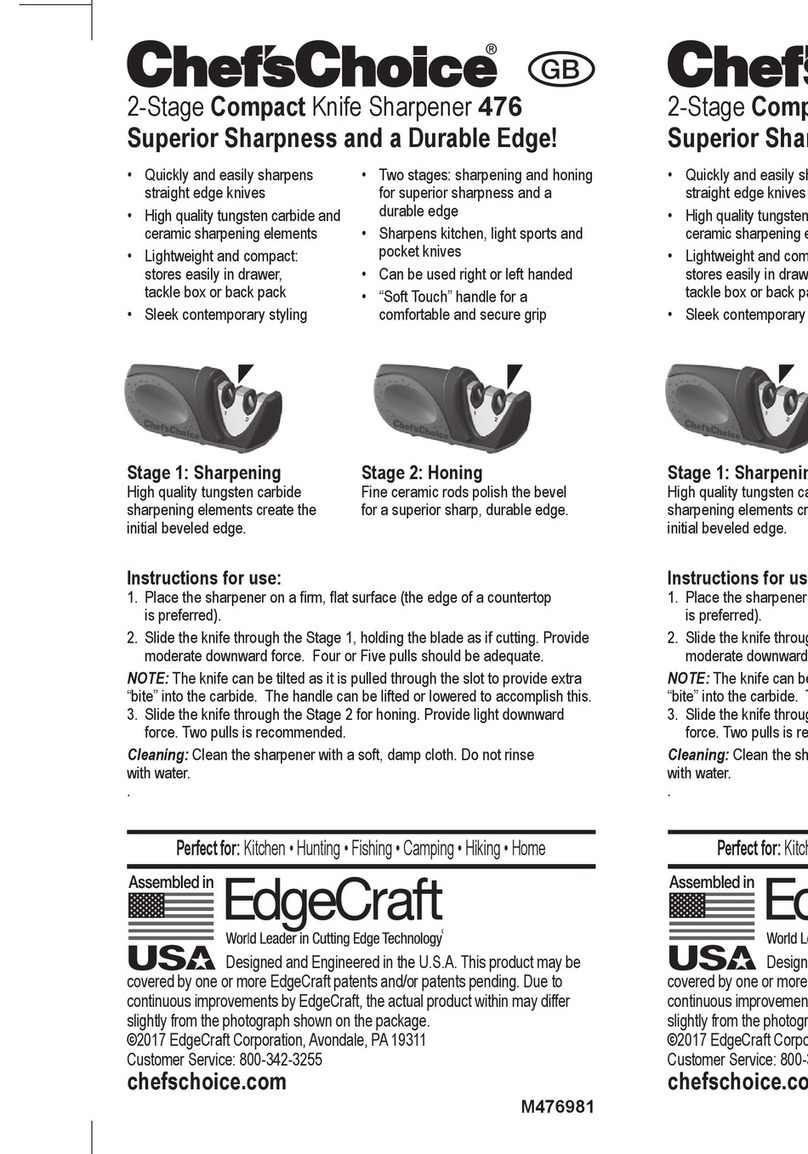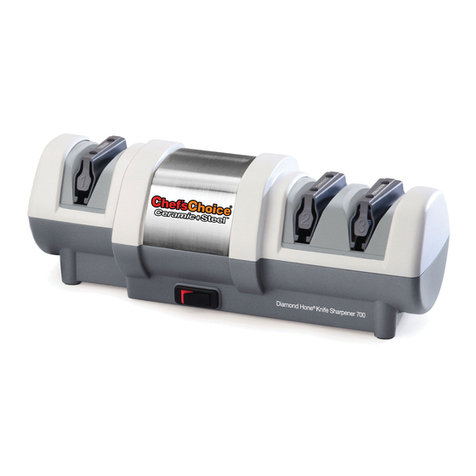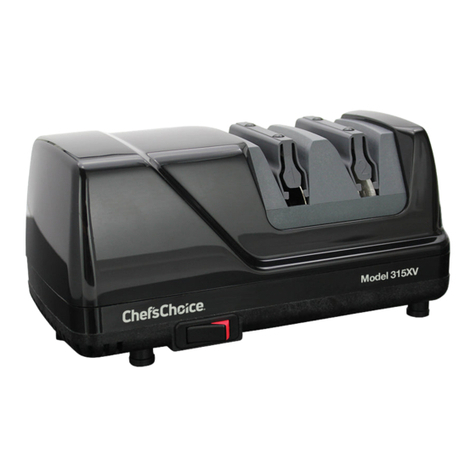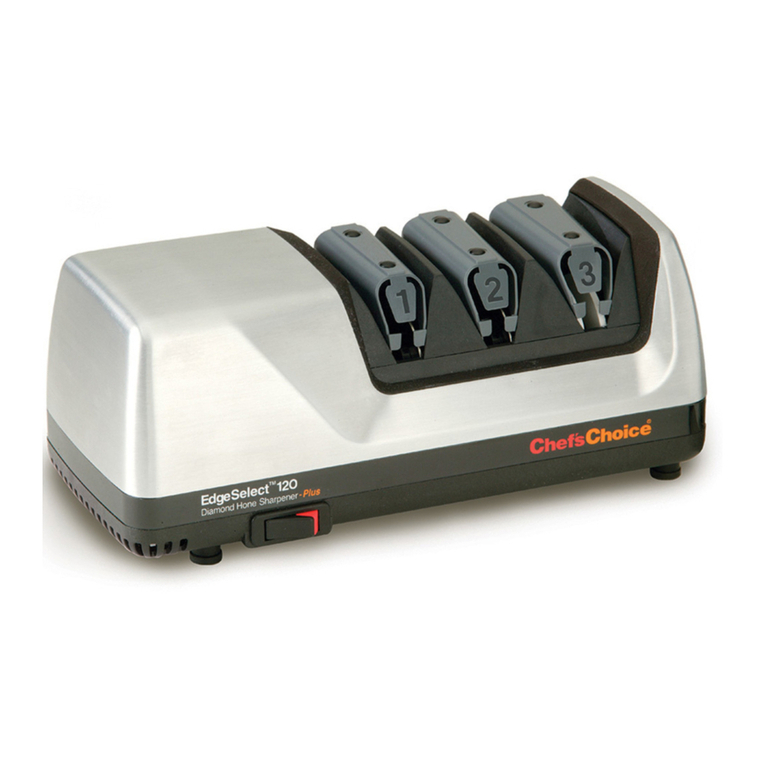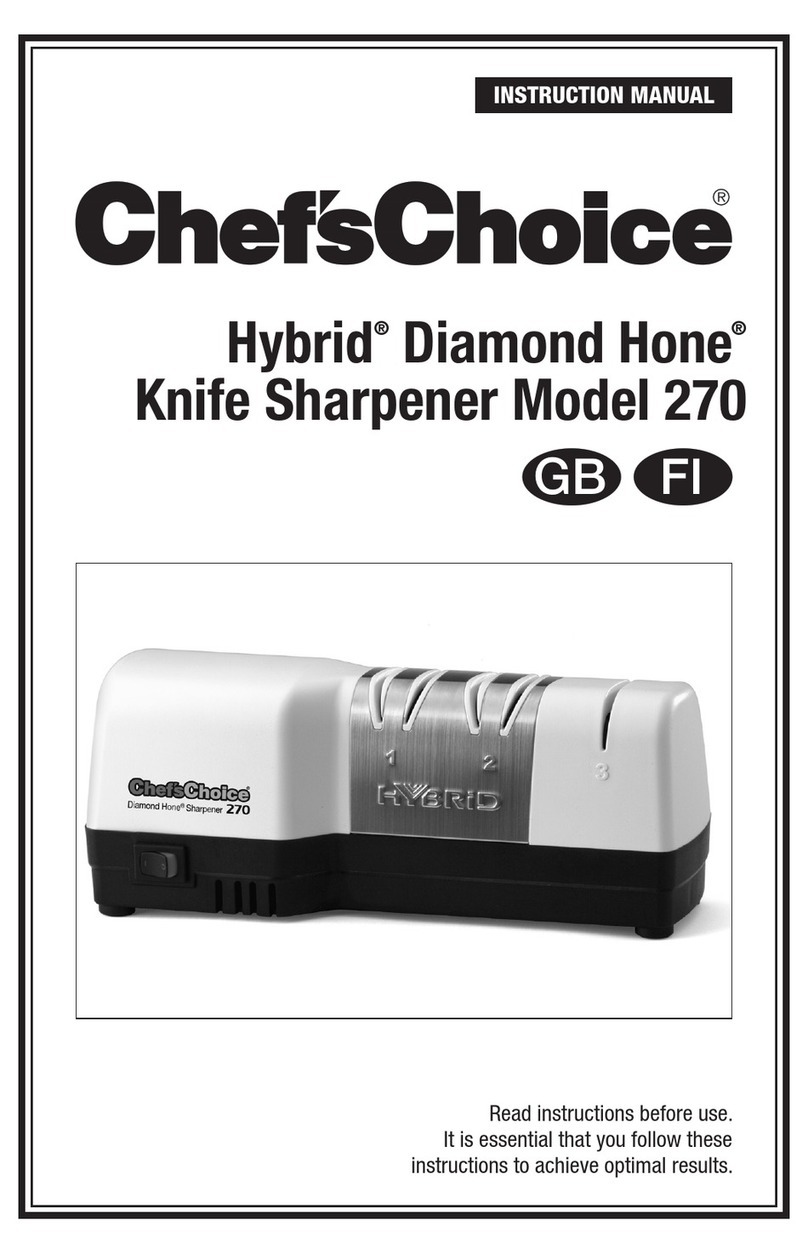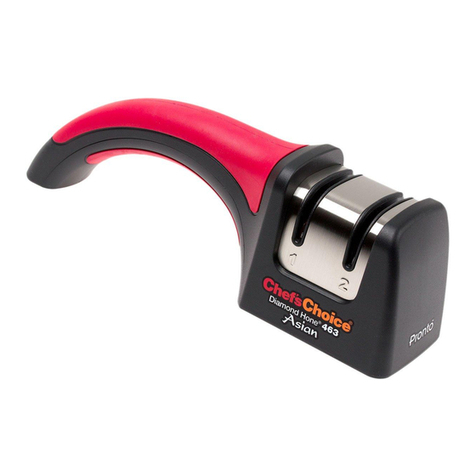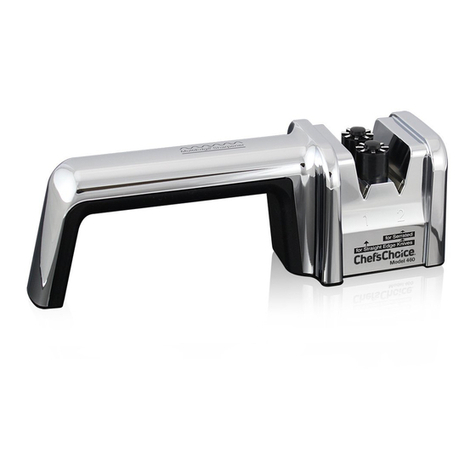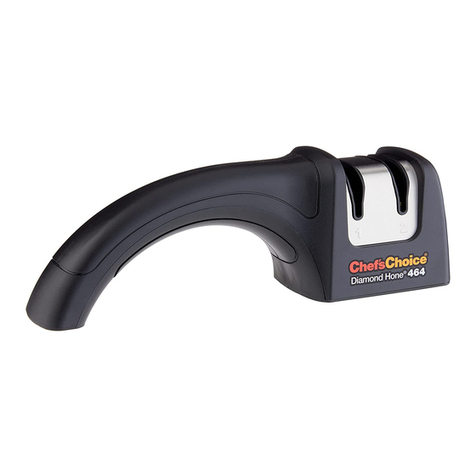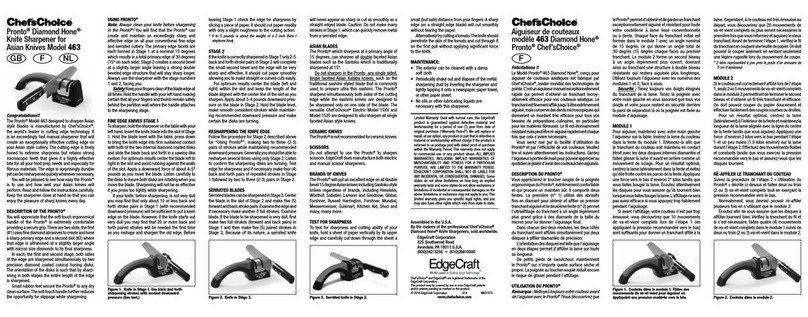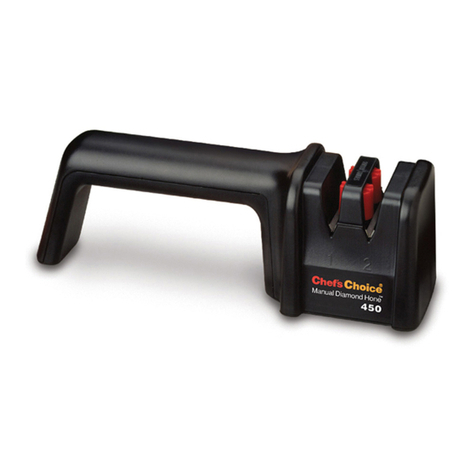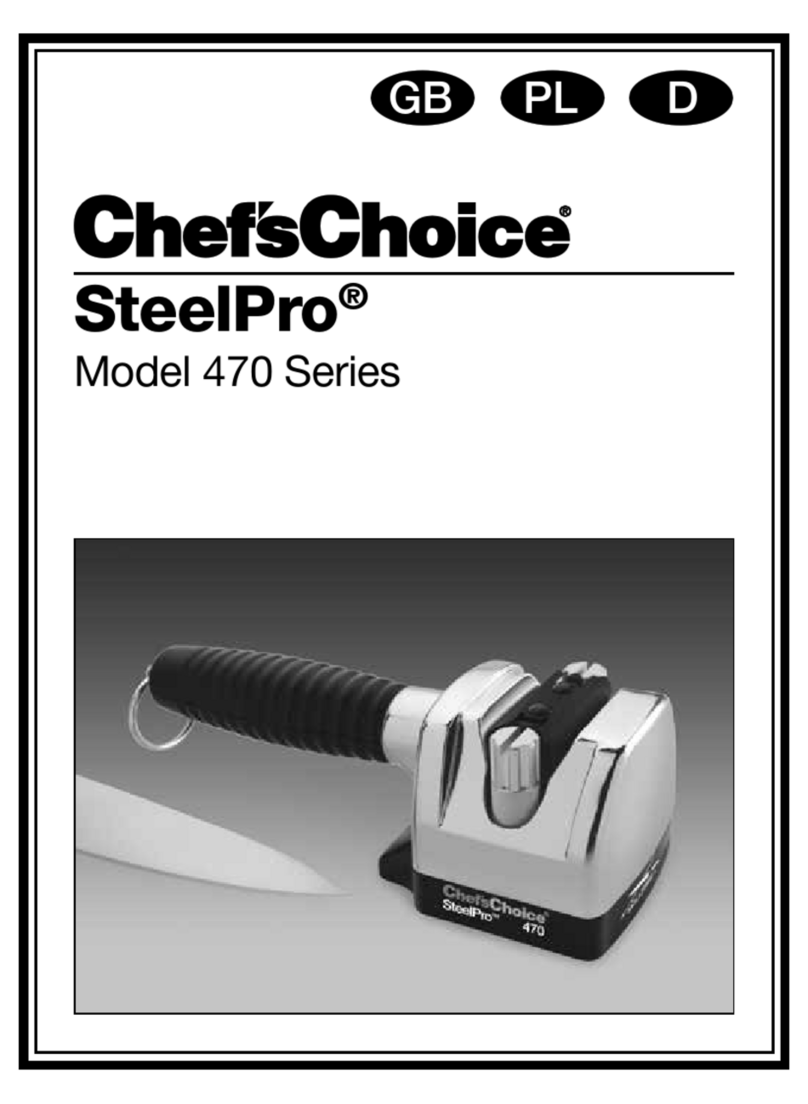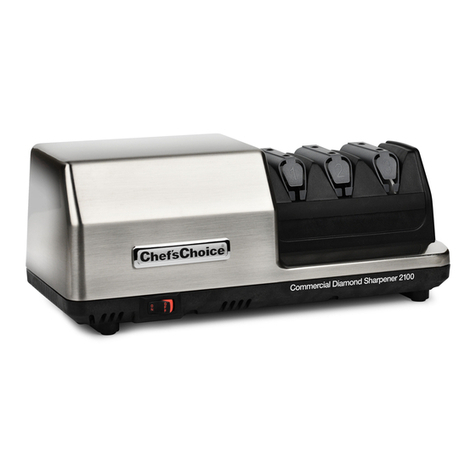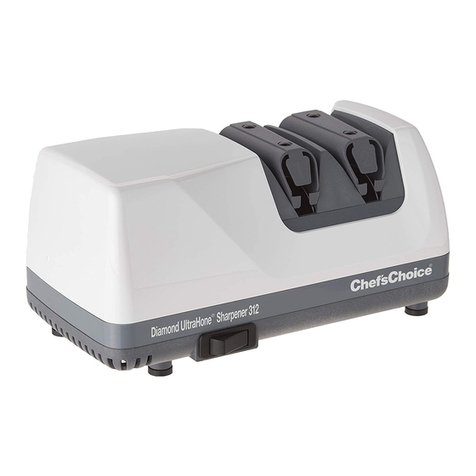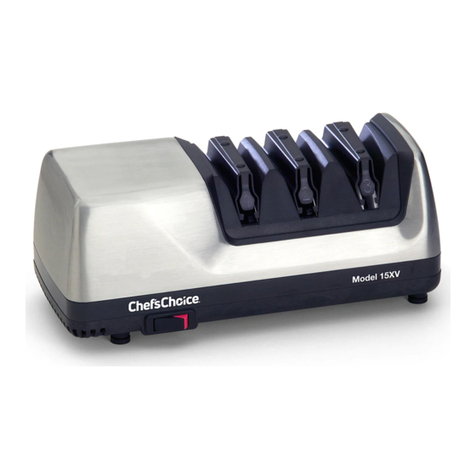9
STROPPING & POLISHING IN STAGE 2
a. Make about 4 to 5 pairs of pulls through Stage 2 (Figure 8), alternating each pull in the left
and right slots (about 3 seconds for each pull on a 5 inch [12 cm] long blade.)
b. Then make 4 pairs of fast pulls alternating through the left and right slots. (1 second for each
pull for a 5 inch [12 cm] blade.)
c. Check the blade for sharpness. For a sharper edge make a few more pairs of fast pulls as
in step b and check for sharpness.
RE-SHARPENING THE E RO/AMERICAN BLADE
Re-sharpen in Polishing Stage 2 as described above. You will be able to re-sharpen repetitively
about 5-10 times using only Stage 2 as described above. After resharpening a number of times,
you may want to hone in Stage 1 to speed the re-sharpening process. In Stage 1 make about
5 pairs of alternating slow pulls and check for a burr. When a burr exists, proceed to polish in
Stage 2 as described above.
DESCRIPTION OF ASIAN AND E RO/AMERICAN BLADES
In general you will find that Euro/American blades have a sturdier cross-section than the more
delicate and thinner contemporary Asian blades. The variation among commercially available
knives of any type is great and in fact some Euro/American blades are very thin and certain
Asian knives have a thicker cross-section designed for heavier work.
2. TRADITIONAL JAPANESE KNIVES, Fig. 9b
The traditional Japanese knife is single beveled and has a wide
factory bevel A along one face of the blade above the small
edge facet. These are sold as either right handed or left handed
versions as shown in Fig. 9b. The wide factory bevel A is
ground, commonly at about 10 degrees. The most popular
example of this type blade is the sashimi knife also called
Yanagi and Takohiki, designed as shown to the right This
lengthy, slicing blade is ideal for preparing very thin slices of
raw tuna or salmon. The back of this blade is commonly slightly
hollow ground. A small single cutting edge facet of about 15° to
20° is created along the front of the edge of the sashimi blade as shown in Figures 9b and 10 in order to estab-
lish the geometry of the cutting edge. An even smaller cutting micro-facet (barely visible to the unaided eye) is
customarily created on the back face of the blade to enhance the sharpness of the finished edge. Figure 10
shows a greatly enlarged cross-section view of a typical factory edge on the traditional single-bevel Japanese
knife. The large factory bevel A serves to deflect the food slice away from the blade as it is cut.
1. CONTEMPORARY ASIAN KNIVES, Fig. 9a
The more popular Asian blades; the thin, light weight Santoku
and Nakiri are generally double faceted (sharpened on both
faces of the blade) as shown in Fig. 9a. Occasionally Santoku
knives are sold with single facets (Fig. 9b below) but these are
not readily available in the United States.
There are other but somewhat heavier double-faceted Asian
knives, the Deba and Gyutou, popular in Asia, which are used for
chopping hard vegetables, for tailing and filleting fish and for
meats. These are basically Asian chefs knives designed for
heavier duty work. The Chinese cleaver is included in this class.
Thickness
(approx. 0.25mm)
double faceted
Thickness
(approx. 0.1-0.2mm)
Back
Left handed ight handed
Factory
Bevel A
Commonly
small
10 to 11°
Factory
Bevel A
Commonly
small
10 to 11°
Front face
Front face
Each facet
about 15°
Sharpened
edge facet
about 15°
Figure 9a. Double faceted contemporary blades.
Figure 9b. Single beveled traditional blades.













